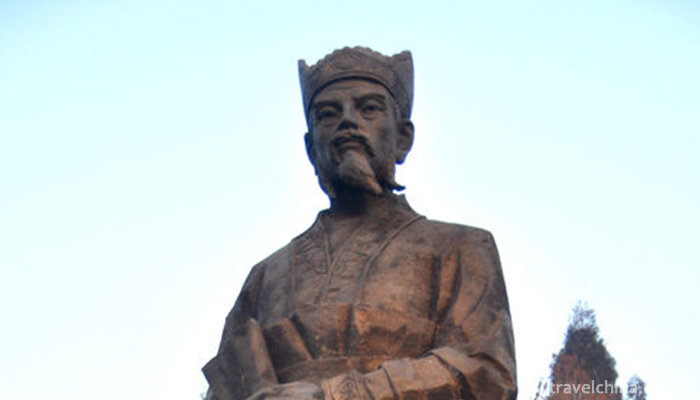Legend of Liu Bowen
Legend of Liu Bowen
Liu Bowen's legend is based on the traditional folk oral literature of Liu Ji, a historical figure, spread throughout the whole country in eastern Zhejiang, with Qingtian, Wencheng and other southern Zhejiang areas as the core areas.
On June 7, 2008, Liu Bowen's legend was approved by the State Council to be included in the second batch of national intangible cultural heritage list.
Historical origin
Liu Ji, Zi Bowen, a famous politician, litterateur, thinker and militarist in late Yuan and early Ming Dynasty, was born in Wuyang Village, Nantian Mountain, Qingtian County, Zhejiang Province (now Wencheng County), and was the founder of the Ming Dynasty. The legend about him was born when he was alive, and the earliest records in writing should be included in Huang Bosheng's Liu Gong Xing Zhuo in the early Ming Dynasty. Over the past 600 years, Liu Bowen's legend has been enriched by folk oral creation and records of literati in past dynasties. At present, there are no more than hundreds of legends collected in Qingtian, Wencheng and other places, most of which are oral inheritance.
primary coverage
The contents include Liu Ji's family background, wisdom and learning, ingenuity and ingenuity, anti-riot and peace, the achievements of founding the country, and the local customs of his hometown, and many other aspects.
Inheritance value
The legend of Liu Bowen has a high literary value and has a great influence on the history of Chinese folk literature; the wisdom story, which occupies a large proportion, has an important cognitive value; the legend of Liu Bowen is a model of traditional morality, and his story has a certain moral enlightenment effect; some historical factors contained in the legend can make up for the inadequacy of the record of Liu Ji in the official history. Therefore, it has certain historical research value.
Inheritance status
There have been many different versions of Liu Bowen's legends in the past, but there are still many related legends that have not been well documented and sorted out. With the passage of time, there are fewer and fewer related narrators. If they are not rescued and protected in time, these oral folk literature will probably be lost.


-
1.Qinhu National Wetland Park
Qinhu National Wetland Park is located between the central part of Jiangsu Province and the Yangtze and Huaihe River. The total area of the scenic spot is 26 square kilometers.
Time 2019-02-07 -
2.Xuanzhen Ancient Cave Ecotourism Area
Xuanzhen Gudong Ecotourism Area is located in the north of Qingxin County, about two kilometers away from Qingyuan City. The area of the whole scenic area is 7.8 square kilometers.
Time 2019-02-26 -
3.River chant
River chant is a traditional folk song spread in the Yellow River and the Yangtze River valley. In ancient times, when people were fighting with nature, they shouted; when harvesting
Time 2019-05-05 -
4.Sama Dance
Sama dance is a kind of folk dance that the Uygur working people dance together during the New Year's Festival. Its movements are simple and powerful. It is mainly popular in Kashgar and Shache of Sou
Time 2019-06-12 -
5.She Costume
She nationality's men and women's clothing is basically the same as that of the local Han people. However, the She ethnic costumes in Fujian and Zhejiang provinces with relatively concentrated populat
Time 2019-06-14 -
6.Skills of Dry Lacquer and Ramie in Tiantai Mountains
As early as the Eastern Jin Dynasty, dry lacquer and ramie had been used in Tiantai folk. Through the continuous efforts of the substitute craftsmen, their skills gradually matured. In the mid-Tang Dy
Time 2019-06-21 -
7.The game of go
Go is a strategic two-player game. It was called "game" in ancient China and "Go" in the West. Popular in East Asian countries (China, Japan, Korea, Korea), is one of the four arts
Time 2019-06-26 -
8.Craftsmanship of Fireworks and Firecrackers
China is the first country to invent gunpowder in the world. Fireworks and firecrackers made of gunpowder also have a long history and enjoy a high reputation in the world. The record of firecrackers
Time 2019-07-10 -
9.Guangdong Opera YueJu
Guangdong Opera, also known as "Guangdong Opera" or "Grand Opera", is one of the traditional operas in Guangdong. It originates from Nanxi Opera and is popular in Guangdong and Gua
Time 2019-07-16 -
10.Sichuan Tourism University
Sichuan Tourism College is the first independent tourism undergraduate college in China. In 2018, it was approved by the Overseas Chinese Office of the State Council as the base of "Overseas Chin
Time 2019-08-31 -
11.Nanchongs tertiary industry
In 2019, investment in real estate development in Nanchong will increase by 23.6% compared with that in 2018. The construction area of commercial housing was 31.8726 million square meters, an increase of 23.5% over that in 2018, of which the newly started
Time 2020-12-17 -
12.Biological resources in Dazhou
There are more than 400 species of vertebrates in Dazhou City, including 60 kinds of mammals, 230 kinds of birds, 14 kinds of reptiles, 10 kinds of amphibians and 85 kinds of fish. There are 52 species of national and provincial key protected wild an
Time 2020-12-20